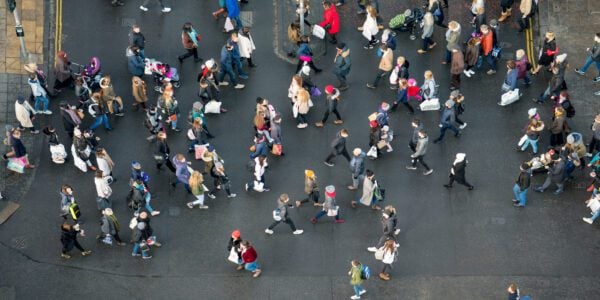
12/03/15
3 min read
People in their twenties have been the worst affected by the economic crisis despite higher qualifications than any earlier generation, according to a comprehensive LSE analysis of what has happened to inequalities in qualifications, employment, pay, incomes and wealth since 2007.
The research, led by Professor John Hills, shows that those in their twenties and early thirties have been hardest hit by far than any other group, with the greatest drop in full-time employment, largest rises in unemployment, and greatest falls in real wages.
While wealth rose for households aged over 65 between 2006-08 and 2010-12, it fell for younger ones. By 2010-12, median total wealth for households aged 55-64 had grown to £425,000, including pensions, but had fallen to £60,000 for those aged 25-34. To bridge the £365,000 gap would require young households to save or make pension contributions of £33 for every day for thirty years.
Key findings:
- By 2013 more than a third of those in their thirties had a degree, and those in their twenties were even better qualified than they had been at the same age. But full-time employment fell by 10 percentage points for men and 8 points for women aged 20-24 between 2006-08 and 2013.
- Hourly wages and weekly earnings fell fastest among younger workers. This affected the highest-paid under 35s, as well as the lowest-paid. After allowing for housing costs, typical incomes for those in their twenties in 2012/13 were nearly a fifth lower than five years before.
The report looks in detail at which groups have gained and lost – comparing men and women, and housing tenure, region, ethnicity, and disability as well as age group. Other findings include:
- Council and housing association tenants fared worst in the labour market. By 2013, fewer than half of adults in social housing were employed or self-employed. But allowing for increased rents, incomes of private tenants fell fastest from 2007/08 to 2012/13, down by 13 per cent in real terms.
- Women are now better qualified than men in terms of higher education and degrees. While men were worst hit in terms of employment between 2006-08 and 2010, they gained more in the recovery between 2010 and 2013 than women. What has happened to the gender pay gap is ambiguous: using mean hourly wages the gap narrowed, but the percentage gap in median pay widened slightly.
- A smaller proportion of White working-age adults now have degrees than of any other group apart from Bangladeshis. But White men had the smallest rise in unemployment and a much higher proportion of White adults are employed than of other groups. Chinese and Indian households now have the highest wealth.
- Employment fell less in London than in other regions, but the gaps between low-paid and high-paid Londoners grew fastest. After allowing for housing costs, the lowest-income Londoners were nearly a fifth worse off in 2012/13 than five years earlier. The top tenth of London households had total wealth over £1 million, but the bottom tenth less than £6,300.
The new report, Falling Behind, Getting Ahead: The changing structure of inequality in the UK, 2007-2013 examines what has changed since the situation described in the 2010 report of the National Equality Panel (which used data centred around 2007). The new report uses data from 2013 (or the financial year 2012/13 in the case of incomes, or July 2010-June 2012 for wealth) to give a detailed picture of how different groups have been affected since the crisis.
An eight-page summary of the report is also available.
Further detailed tables and breakdowns, and an interactive web-tool for their analysis will be available on www.casedata.org.uk
The paper – and a more detailed examination of inequalities in London published at the same time – is part of CASE’s research programme Social Policy in a Cold Climate (SPCC), funded by the Joseph Rowntree Foundation, the Nuffield Foundation, and Trust for London. The views expressed are those of the authors and not necessarily those of the funders.




















































